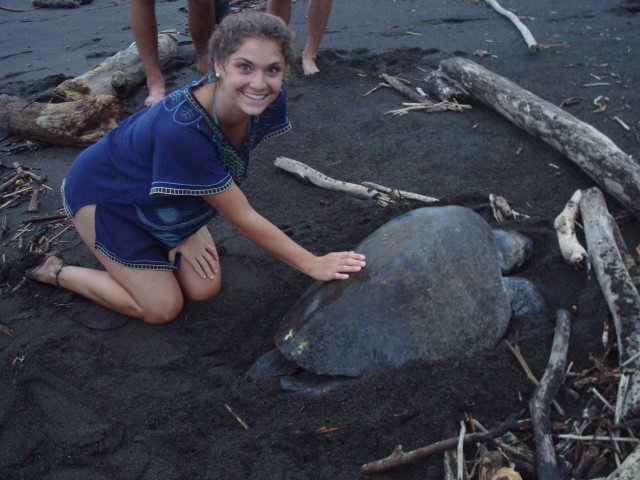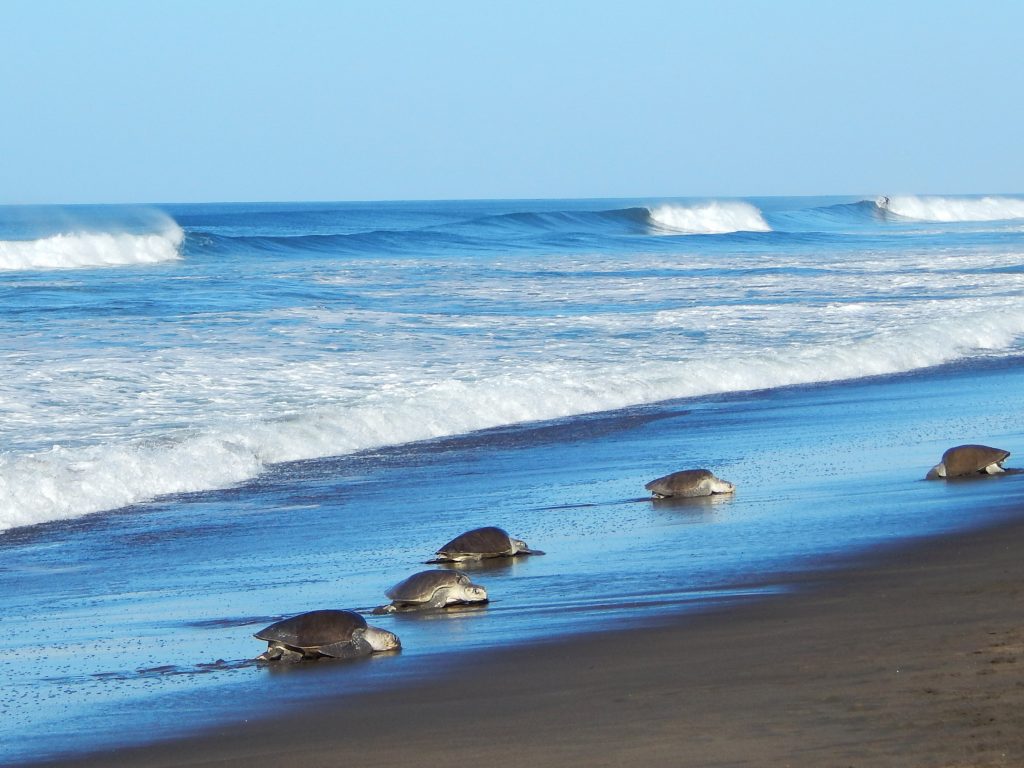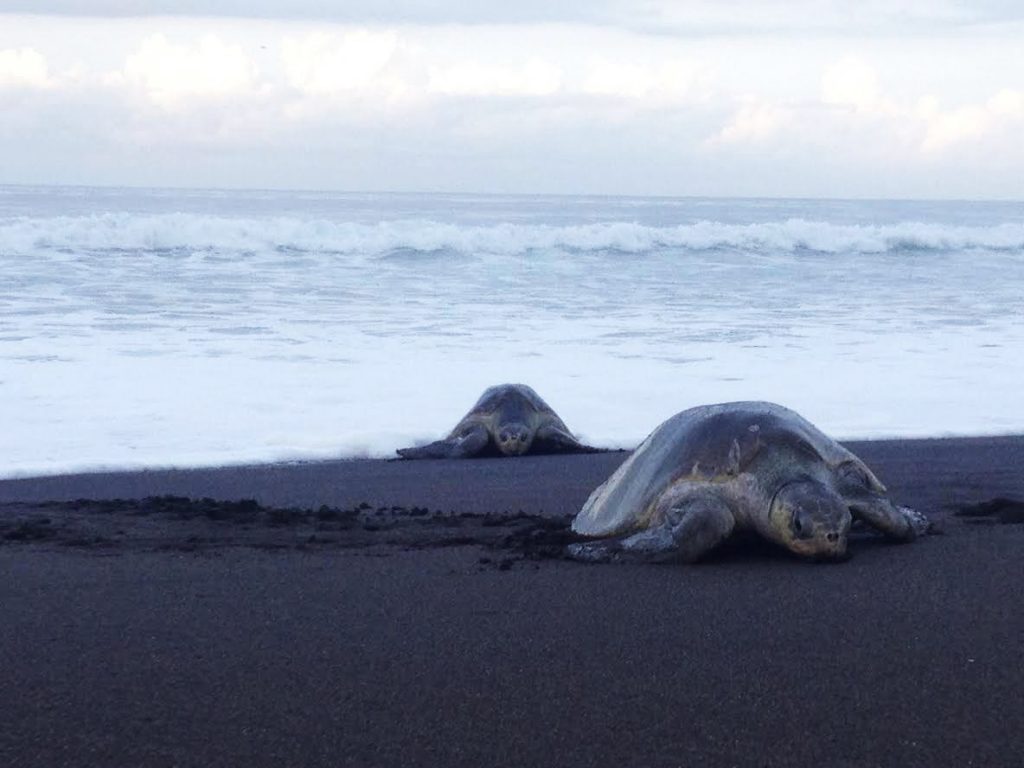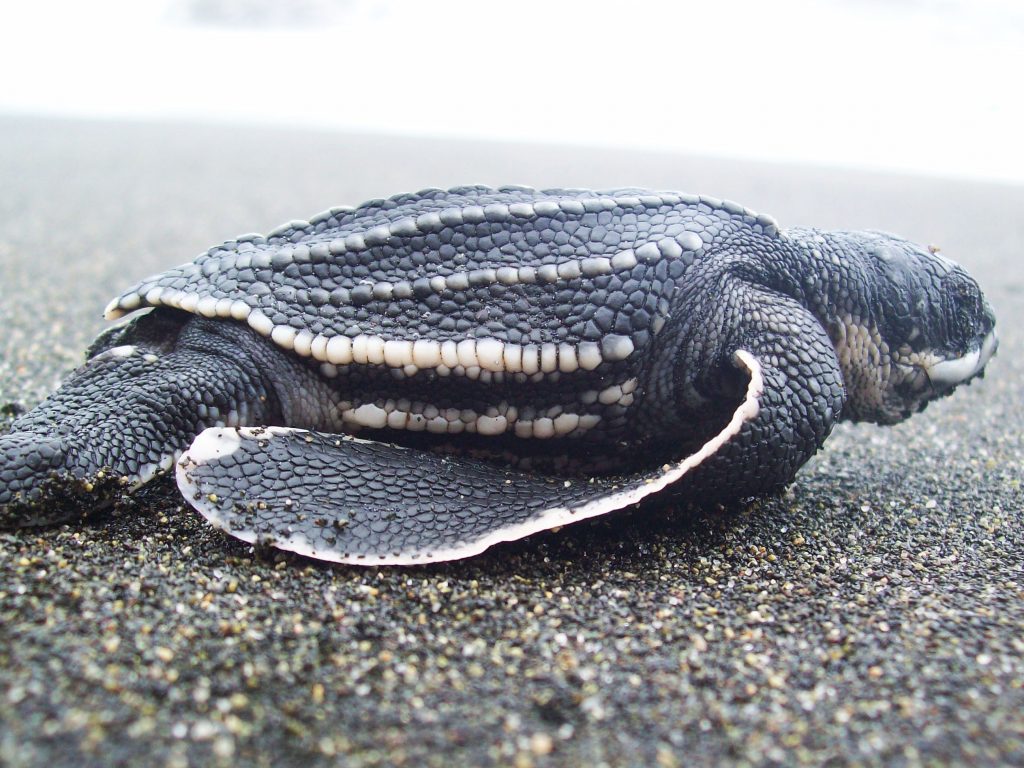On Summer Expeditions and Girl Scout Destinations, some of our students get the chance to discover one of the most mysterious animals found in Costa Rica and Panama: leatherback sea turtles! Now, there are no doubts that these turtles are beautiful and will help you have some great pictures after your adventure in Central America, but how much do you know about them?
Here are ten things that make Leatherback sea turtles so unique:
1. They are named “leatherback” because of their shell
Leatherback turtles are named for their shell: it really is leather-like – and a bit oily! Other turtles have shells that tend to be hard and bony.

2. They are one of the most migratory turtle species
Leatherback turtles cross the Atlantic and Pacific oceans! They do so to travel from beaches where they lay eggs to areas that have an abundant amount of the food they need, for example the West coast in the US. But they can also be found in regions such as East Africa, the Galapagos or in Central America from Guatemala to Panama.

3. They are the largest of all turtles!
Leatherback turtles can reach 500kg and around 60 inches as adults- it is one of the largest living reptiles. It is remarkable that they can grow to be that large, considering that they eat mainly foods that contain little protein and give little energy, such as jellyfish!
4. Leatherback turtles can swim deeper than other turtles
Leatherbacks can dive as deep as 1,200 meters, which is much deeper than other marine turtles. They are able to do this thanks to the unique way their blood is distributed to their bones and cartilage. Because of it, they can tolerate much colder water than other animals.

5. Leatherback turtles are endangered
Leatherback turtles are fewer and fewer in numbers in spite of the fact that female leatherbacks may lay 60 to 120 eggs around four times per season (a phenomenon called arribada). This is happening notably due to the fact that their eggs are collected to be sold and turtles often get caught in fishers nets. Certain subpopulations of leatherback turtles have been said to be critically endangered by large conservation organizations. The U.S. Federal government has also listed the leatherback as endangered worldwide.
Though the future might seem grim for for Leatherback sea turtles, important conservation efforts have been made in Africa and Central America, including by our students who have worked with local biologists. This can only help, especially considering that the most important nesting beaches in the Pacific are in Mexico and Costa Rica, with other important beaches found in Nicaragua, Panama and Guatemala.
You can learn more about our Summer Expeditions and Girl Scout Destination courses on our website, or learn more about arribadas when turtles come out of the water to lay eggs on the beach on our blog and our Youtube Channel.